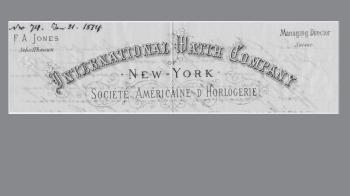It’s a big year for IWC, which celebrates 150 years of activity this year. After interviewing Christophe Grainger-Herr, the brand’s CEO earlier this year, then quizzing Walter Volpers, the brand’s Product Manager, Technics, on the capsule collection presented this year across all the brand’s lines, we now look back on the most important watches that have marked the company’s history since the American industrialist Florentine Ariosto Jones set up the company in the unusual location of Schaffhausen in 1868.
The Jones calibre
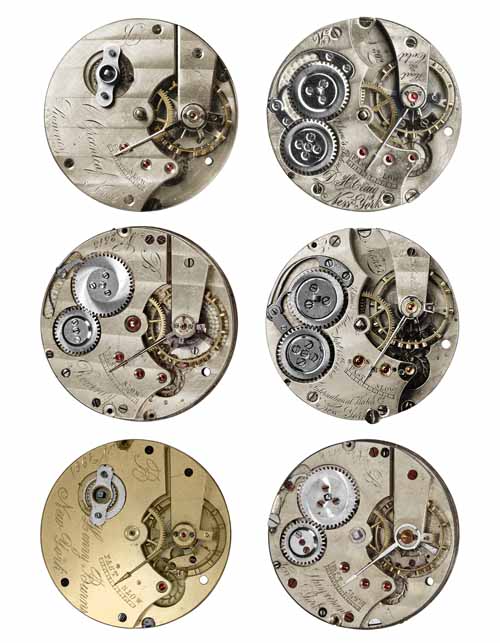
It all started not with a watch but with an entire line of movements for pocket watches that were destined exclusively for the American market. Much like the motor cars of today, these movements were produced around a common architecture in varying levels of quality, each one of which was indicated by a letter (B, D, E, H, R and S) denoting its “pattern”. Two of the most noticeable differences between the Jones calibres and other Swiss made watch movements at the time were the use of a three-quarter plate rather than separate bridges and an elongated index that allowed for easier adjustment of the balance spring tension. F. A. Jones’s legacy still lives on today in the 98000 calibre family of hand-wound movements that are found in Portugieser tourbillon and minute repeater models, among others.
The Pallweber pocket watches

These pocket watches with a fully digital display, based on a design by Austrian watchmaker Josef Pallweber, were so far ahead of their time that IWC waited until 124 years after their first appearance before offering them in a wristwatch for the company’s 150th anniversary. The higher energy consumption required to power the toothed wheels that turned all the discs to display the time may also have been a factor in the short-lived popularity of the Pallweber pocket watches. The models presented this year have a movement that has been modified and improved with a separate mainspring and going train to power the discs to avoid this problem. The Tribute to Pallweber limited editions can thus offer a respectable power reserve of 60 hours.
The Special Pilot’s Watch

Known more formally as the Reference IW436, the first IWC wristwatch designed specifically for pilots marks an important point in horological history in general. When it was first launched in 1936 pilots were still using pocket watches in unheated cockpits where they would wear thick coats and gloves to protect them from extreme temperatures. The IWC Special Pilot’s Watch could be strapped to the wrist and its oversized crown meant that it could be adjusted even when wearing thick gloves. The black dial with contrasting large luminescent numerals and hands made it easily readable and a rotating bezel allowed pilots to set flight times at a point in aviation history when most navigation was still done by waypoints, where timing down to the nearest second was vital. The simple design of the watch has endured on IWC pilots’ watches ever since.
The Portugieser
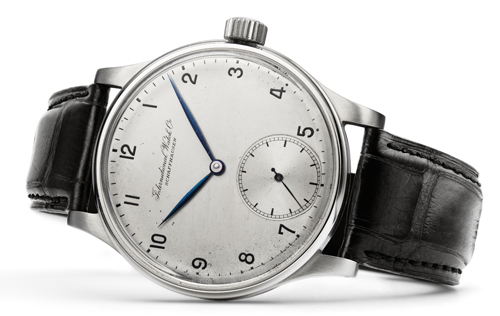
One of IWC’s most recognizable timepieces also has one of the most unusual backstories. It was not just pilots but also sailors who were looking for big watches. In 1939 two businessmen from Portugal made large orders for such watches from IWC for officers in the Portuguese merchant navy. Because they were destined for use in ocean navigation, aside from the size, the customers also had a requirement that the watches be as precise as a marine chronometer. IWC’s answer was to fit its 74 calibre pocket watch movement into a wristwatch with a diameter of 41.5 millimetres – a size that is average for today but was huge at the time. The railway track minute scale, Arabic numerals and leaf-shaped hands of the first Portugieser, reference IW325, have also endured as signature elements of this collection.
The Ingenieur
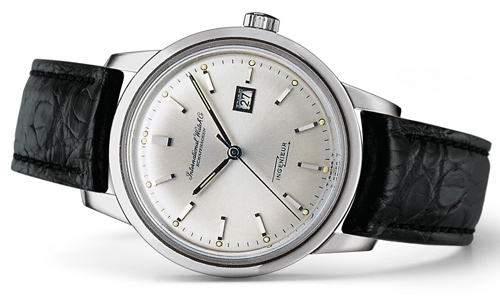
IWC’s first self-winding movement came in 1950 and featured an innovative winding system that was the brainchild of the company’s technical director Albert Pellaton. The patent involved the use of two independent pawls, either of which could engage with the teeth on the winding wheel while the other remained free, thus allowing the winding system to capture movements of the oscillating mass in either direction. This new technology was used in the first Ingenieur model (Reference IW666) in 1955, which also featured a soft-iron cage for protection against magnetism.
The Aquatimer
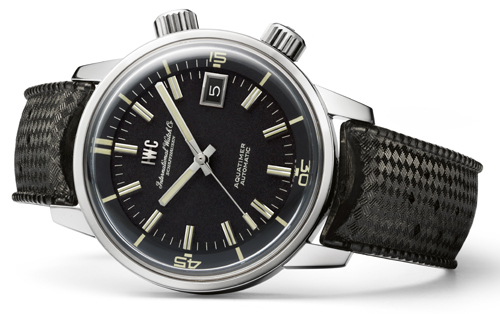
Like the Ingenieur, the Aquatimer was born from the need for a timepiece to meet new requirements. When scuba diving started to become popular in the 1960s, divers required timepieces that could resist the significantly higher pressure encountered at depths of in excess of 100 metres. Thus divers’ watches were born. IWC’s answer was the Reference IW612, the Aquatimer, which was water resistant to a depth of 200 metres. Unlike its peers it had a rotating scale on the dial, rather than as a bezel on the case, which meant not only that the case integrity was better as far as water resistance was concerned, but also that the dive time – crucial for determining the remaining amount of air and calculating compression stages, could not be accidentally altered whilst under water.
IWC Porsche Design Titanium Chronograph
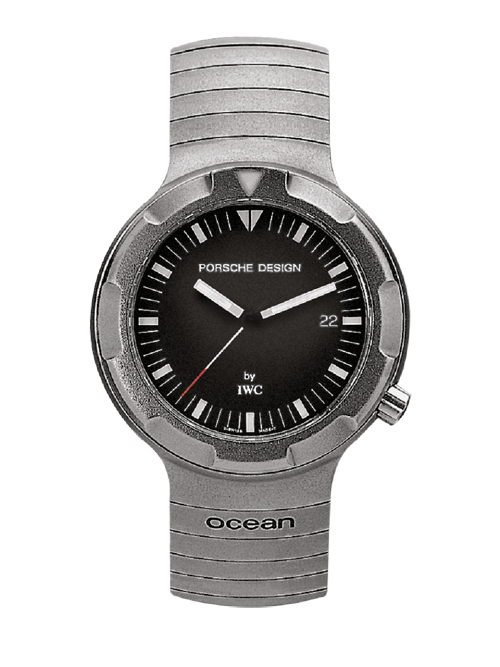
Presenting Reference IW3700, the world’s first wristwatch with a titanium case, was a major achievement for IWC. Its robustness, lighter weight than steel and anti-allergenic properties, not to mention its cool matte grey look, made it perfect for use in a watch. Unfortunately, titanium is also notoriously difficult to machine. IWC was the first watch brand to perfect the techniques required for machining titanium and presented the Porsche Design Titanium Chronograph in 1980. It was arguably the most successful watch produced in almost 20 years of partnership between IWC and Porsche Design, before the German company switched allegiances to Eterna until 2014. Today, Porsche Design is fully controlled by the Porsche parent company.
Da Vinci Perpetual Calendar
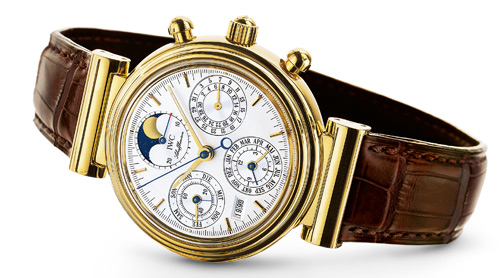
You can still spot 84 year-old Kurt Klaus at the SIHH and even dispensing horological master classes to lucky individuals. He is among the few living watchmakers who could genuinely be considered a legend. At the very peak of the “quartz crisis” and the existential threat to the traditional Swiss watch industry, Mr Klaus embarked upon a complete redesign of the perpetual calendar movement. His simplified calendar module, consisting of just 82 components, made its debut in the Da Vinci collection as Reference IW3750 in 1985. Like any perpetual calendar movement, it required no adjustment until 2100, but it also featured a chronograph and a so-called astronomical moon phase that does not require adjusting for 122 years!
The Big Pilot’s Watch
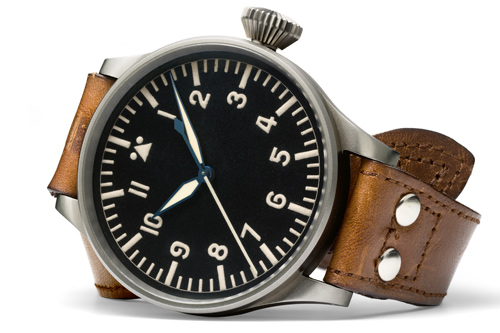
It’s a tribute to the success of IWC pilot watches that a second model should feature in this top ten. The so-called Big Pilot’s Watch (Reference IW5002) was presented in 2002 and inspired by the calibre 53 T.S.C. (Tirette Seconde Centrale, or centre seconds), which was made for the German air force in 1940 and, at a diameter of 55mm, was the biggest wristwatch IWC have ever produced. In the Reference IW5002 the case diameter reaches a smaller, but still imposing, 46mm and calls upon all the signature elements of a traditional pilot’s watch. The IWC 5011 calibre powering it uses the Pellaton automatic winding system, offers a power reserve of seven days and incorporates a special mechanism that stops the watch after 168 hours, ensuring that there is no loss of torque in the mainspring as it winds down.
Portugieser Sidérale Scafusia
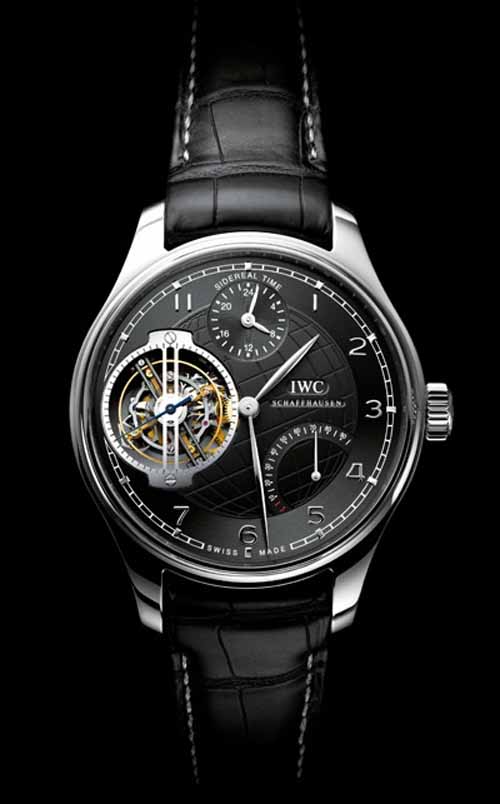
This is quite simply the most complicated watch ever made by IWC, which took 10 years of research and development. Equipped with a patented constant-force tourbillon, it shows mean solar time, sidereal time, a star chart with ecliptic and celestial equator, sunrise/sunset times (accounting for daylight savings time), perpetual calendar with leap year and power reserve indication. Its 94900 calibre is a hand-wound movement with two mainspring barrels to power all the complications and offer 96 hours of power reserve. Over the first half of this power reserve, the constant-force mechanism ensures an extremely precise going rate. The perpetual calendar mechanism in this watch is an evolution of the Kurt Klaus design that is programmed for 577 years. Unlike many perpetual calendars, which are good until 2100, the Sidérale Scafusia will not need adjusting until the year 2499.
